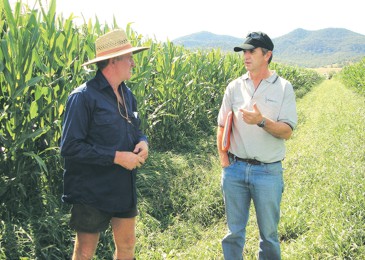
Hunter Valley dairyfarmers Ian and Maria Simpson are one of six valley dairying families working to break through the barriers to increasing their farm’s productivity. Working with Industry and Investment (I&I) advisers Anthea Lisle and Kerry Kempton the group is among the first dairyfarmers to apply FutureDairy’s Complementary Forage System (CFS) under commercial conditions.

Recent research by the FutureDairy project has shown that forage rape (Brassica napus) holds its nutritional quality for more than three months after sowing, giving dairy farmers greater flexibility for grazing the crop. Forage rape, or brassica, is a useful way to fill the usual autumn feed gap on Australian dairy farms, due to its rapid growth, high quality, high potential yield, low establishment costs and efficient use of water and nitrogen.

The FutureDairy project is working with northern Victorian researchers and farmers to investigate new options for dairy feeds that may be suitable for farming in an uncertain climate. Project leader, Associate Yani Garcia, said the work would draw upon the principles of FutureDairy’s Complementary Forage System (CFS), adapting them for specific conditions in northern Victoria.

Six Hunter Valley dairying families are working to break through the barriers to increasing their farm’s productivity. Working with Industry and Investment (I&I) advisers Anthea Lisle and Kerry Kempton the group is among the first dairy farmers to apply FutureDairy’s Complementary Forage System (CFS) under commercial conditions. A CFS involves allocating a portion of the farm to intensive production to increase productivity from home‐grown feed.

Over the past year, the Australian dairy industry has seen a marked increase in interest in robotic or automatic milking systems (AMS). Dr Kendra Kerrisk who leads FutureDairy’s AMS research at Camden, NSW said that people are still showing interest despite the current difficult financial times.

FutureDairy researchers have discovered that cows can be trained to respond to sound, opening up possibilities for teaching cows to come to the dairy in response to a particular call.






